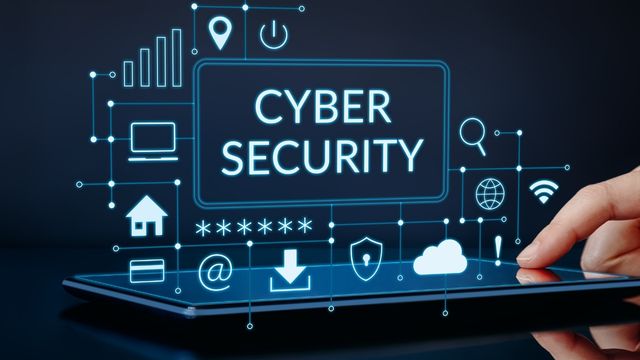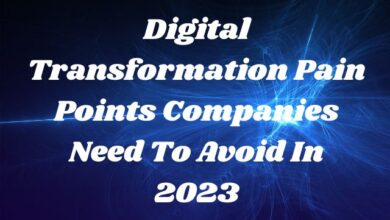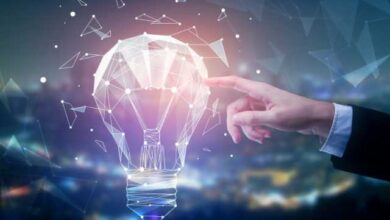How Cybersecurity is Changing Technology Today

Cybersecurity is Changing Technology Today: As technology advances, so do the threats and weaknesses it exposes. There is a growing security gap between user and provider expectations due to the growing number of potential dangers. In short, cybersecurity is more influential than ever in how things are done nowadays.
Many of us encounter the term “cybersecurity” regularly. In this post, we’ll delve more deeply into how cybersecurity has changed the technology landscape now and how it will do so in the future.
Cybersecurity is Changing Technology Today
Data Breaches in the News
Cybercriminals use weaknesses or gaps in a company’s security posture to gain access, which leads to data breaches.
As a result, data loss poses a grave financial risk. International cybercrime cost businesses $6.9 billion in 2021, according to the Federal Bureau of Investigation’s 2021 Internet Crime Report.
The majority of the time, these losses are the result of hacks in which copious amounts of personal data, such as credit card information or social security numbers, are taken.
Cybercriminals may try to utilize your personal information for their gain if they have access to it. For instance, some of these frauds can be carried out by using your personal information to make fraudulent transactions, empty your bank account, or otherwise take advantage of you:
- Get new credit cards and utilize your current ones.
- Money can be added to or taken out of your bank or investment accounts.
- Submit a claim for a tax refund in your name.
- Utilize your health insurance to pay for medical care.
- Make use of government assistance.
- Use the rewards on your credit card to earn discounts or free flights.
Additionally, according to Experian, thieves with access to a lot of stolen data frequently trade or sell it on the dark web. Social Security numbers, for instance, may sell for $1 each; credit card numbers, up to $110; and US passports, up to $2,000 – but purchasers may try to discount them based on their quality rating or other considerations.
Past And Recent Data Breaches
The following list of recent high-profile cyberattacks and breaches shows how technology has developed to the point where it now has an impact on people like you, your company, and society as a whole.
Capital One
An unauthorized user gained access to 140,000 U.S.-based Social Security numbers, 80,000 U.S. and Canadian bank account numbers that were connected, and roughly 1 million Canadian Social Insurance Numbers in July 2019, according to Capital One.
Over 100 million credit card users in the US and Canada were impacted by the incident. As a result, one of the biggest data breaches affecting the financial services sector happened to Capital One.
Marriott International
Marriott International, a group of hotels, reported in November 2018 that hackers had gained access to its Starwood guest reservation database.
About 383 million visitors’ personally identifiable information, including names, phone numbers, email addresses, and passport numbers, were exposed as a result of the hack.
In addition to all of this, The Marriott Hotel group said last month that it experienced a new data breach, in which hackers stole 20 gigabytes of private data, including credit card details.
Before a threat actor targeted Marriott to extort money from it, which Marriott did not agree to pay, Marriott claimed it had noticed the event and was looking into it.
A gang claiming responsibility for the attack claims to have stolen credit card numbers as well as private information on staff members and visitors.
Colonial Pipeline
A hack that targeted Colonial Pipeline, a prominent oil pipeline operator based in Houston, Texas, in May 2021 affected the company’s automated operating technology and systems for controlling oil flow.
The East Coast was impacted by this episode, which caused shortages in numerous areas. Even though the business paid a ransom to regain access to crucial data that had been taken when hackers entered their systems, it took many months for the situation to be entirely restored.
Shortly after being infiltrated by DarkSide Group, Colonial paid a $4.4 million (paid in bitcoins) ransom in reaction to the incident. This Russian-affiliated cybercriminal organization operates online, extorting victims using Bitcoin and other cryptocurrencies through ransomware and other means.
Cybersecurity In The Next Four Years
Cybersecurity Ventures predicts that during the next five years, the cost of cybercrime would rise by 15% yearly, reaching $10.5 trillion in 2025 (up from $3 trillion in 2015).
This wealth transfer is the biggest in recorded history. Taking away incentives for individuals to start their firms or work for larger corporations, puts innovation and investment at risk.
According to the United Nations, it will be more costly than the $32 billion global drug trade and larger than the $306 billion in damages brought on by natural catastrophes in 2017.
According to the research firm Gartner, these are the factors that the majority of businesses will need to think about through the end of 2026:
- More than five billion people more than 70% of the world’s GDP will be covered by government legislation mandating businesses to give customers privacy rights during the next five years.
- Over the past year, consumer privacy rights have exploded, with 3 billion people now having access to them across 50 nations.
- 60% of firms will use a zero-trust strategy by 2025.
- More than half, though, won’t be able to take advantage of its advantages, mostly because of how expensive and difficult its deployment is.
- Additionally, up from less than 1% in 2021, 30% of nation-states will approve legislation managing ransomware payments and agreements with hackers by 2025.
- To deal with converging threats including terrorism, cyberattacks, data breaches, civil unrest, and political instability, it is anticipated that 70% of CEOs in 2025 will demand an organizational resilience culture.
- By 2026, risk-related performance requirements will be a requirement in 50% of contracts for C-level executives.
- As expected, businesses’ main worries in the upcoming four years will be on cybersecurity.
- High-level executives should be rewarded for responding to cyber dangers through incentive-based contracts.
- This aims to raise C-level executives’ cybersecurity accountability.
Cybersecurity and Innovation: Connecting The Dots
As part of cybersecurity’s never-ending attempts to reduce risk, increasing virus detection, decreasing false positives, and defending against attacks have all become common practices.
People are connecting online, sharing personal information, and committing cybercrimes, which can range from identity theft to highly advanced military operations. Additionally, as our world’s systems become more automated and connected to the internet, we are in greater danger of huge cyberattacks.
Due to increased data sharing on social media, fraudsters now have more access to more people’s personal information. This is because there is so much personal information available online, which facilitates phishing attempts.
Another important consideration is that younger generations are better able to comprehend the intricacy of the internet because they have grown up with it.
As a result, because Millenials, Gen Z, and Gen Alpha were born into and nurtured as digital natives, cybersecurity is perceived—and may be treated—differently than it might be if its definition were based on the experiences of older generations.
Over the coming years, they will determine how quickly the newest developments in cybersecurity advance.
As a result of the significant hacks at organizations like Marriott International and Linkedin, several organizations have started looking for solutions and have put the following methods in place to enhance their cybersecurity:
Solution providers for continuous monitoring
To support compliance, security, and company expansion, an efficient cyber security monitoring approach discovers all data and vulnerabilities within a network or system.
Securing your network depends on regularly checking for intrusions. A network is scanned by an intrusion detection system (IDS) for abnormal activities, such as policy violations or malicious software.
Suspicious activity can be detected using reports and data gathered from a security information and event management system. The following categories can be used to classify IDSs:
- A network IDS keeps track of the incoming traffic to a computer network.
- IDS with a host-based architecture are made to keep an eye on important operating system files.
- By spotting changes in patterns, perimeter IDS systems find intruders.
- To keep an eye on remote computing resources, virtual machine-based intrusion detection systems (VMIDS) combine network, host-based, and perimeter IDS systems.
Services in cybersecurity management
An outsourced IT department that helps with all network security procedures is referred to as a managed cybersecurity service. Key characteristics include:
- Assessments and audits- These are initiatives to evaluate the effectiveness of a company’s security controls, providing information on any network vulnerabilities.
- To maintain a strong cyber strategy, businesses may benefit from hiring IT security personnel for professional guidance, insight, and help.
The idea of cybersecurity has changed over time. Although it wasn’t always there, when it did, it altered the way we view security and privacy. Additionally, the development of cybersecurity has improved threat awareness and overall preparation.
Today, having a basic grasp of cybersecurity is essential since it allows one to prepare for prospective attacks and recognize how to defend against them.
Using AI and machine learning to enhance cybersecurity
The increasing influence of AI and machine learning on all spheres of life today is changing cybersecurity.
Cybersecurity experts now face new issues as a result of the integration of these technologies since they need to look beyond conventional security measures to protect the data of their clients.
AI may enhance cyber security in a variety of ways, including by making it simpler to spot irregularities in network traffic and by enabling you to foresee possible attacks before they materialize (with improved threat intelligence).
This could prevent businesses from losing millions of dollars to data breaches-related losses and damages.
However, AI also has risks: by taking advantage of holes in defenses’ software or network infrastructure, attackers might employ machine learning algorithms to their advantage.
The field of cybersecurity has evolved from the days of firewalls, anti-virus software, and operating system patches to the pricey and complex AI-powered solutions of today.
ED&F Man Holdings’ usage of the Cognito system
Several years ago, commodities broker ED&F Man Holdings experienced a security problem. According to a cybersecurity assessment, the company’s procedures and equipment needed to be improved.
The business used Cognito, a platform for AI-based threat detection and response from Vectra. Cognito gathers and retains network metadata—information about how a computer interacts with other computers online—enriches it with special security insights, and then uses machine learning algorithms to use this data to identify attacks in real-time.
Cognito discovered several man-in-the-middle attacks as well as an Asian bitcoin mining operation. The business also discovered hidden malware that had been active for a while.
The State of Cybersecurity and Emerging Technologies
As new techniques and technologies are created, the cybersecurity environment has always been difficult, leading to corporations discovering weaknesses in networking, trust-based security, and authentication. Additionally, businesses are thinking about how quantum computing and the weaponization of artificial intelligence (AI) may impact their operations.
Let’s examine the relationship between cybersecurity and some of the most important new technologies of the present.
Quantum Computing in Cybersecurity
It’s time for the quantum revolution. Although it will take a decade rather than sooner to notice the major effects of large-scale fault-tolerant quantum computers, which promise to speed up some types of computations by many orders of magnitude above current machines. However, shortly, quantum computers will offer great advantages.
However, due to crucial elements like the following, quantum computing poses numerous security challenges:
- Essential cryptography relies heavily on random number creation.
- Unfortunately, many traditional random number generators use pseudo-random number generators, which are techniques that are not random, leaving them vulnerable to attack.
- All cryptographic procedures would be predictable and unsafe if computers weren’t configured to generate some unpredictability in their responses.
- Computer algorithms should always provide the same results when fed the same input; this predictable behavior makes them poor sources of random numbers.
- As a result, the information’s decryption could give attackers access to crucial data.
- The RSA method and other public-key cryptography are thought to be vulnerable to quantum computing’s capability, which has potentially enormous ramifications for online commerce.
- Public-key cryptography is in danger, so there are now algorithms that can withstand being used by a quantum computer.
Investments in the foundational studies required to grow qubit count, fix faults, and create security threat-fighting algorithms are rising. While some of the current encryption algorithms may become obsolete due to quantum computing, it promises to offer a far higher level of communication security and privacy.
Your business may get ready for the coming quantum revolution by adopting a long-term perspective on quantum computing and technology and putting serious effort into it right now.
Cybersecurity and the Metaverse
Although the metaverse presents significant risks to security and privacy, it has excellent growth potential. There are many ways to hack into other people’s data and misuse it for one’s gain in the metaverse because everything is made virtually, including computer programs that hackers can modify.
Phishing emails, data hacking, and malware attacks are just a few of the threats that users of the metaverse encounter.
The metaverse’s distinctive construction, however, presents significant difficulties for anyone attempting to explore it.
For instance, non-fungible tokens (NFTs) and digital currencies are utilized in the metaverse for a variety of purposes, but hackers may find these objects fascinating just because they can be changed.
Similar to the internet, the metaverse will function to its fullest capacity with a combination of software and hardware security solutions.
The metaverse’s resources and apparatus must be capable of spotting dangers, providing defense against major risks, and giving users specialized gear—like smart glasses or VR headsets—to experience their immersive virtual reality.
Despite being essential to the metaverse’s operation, these gadgets are easy targets for hackers due to their lack of security features. To stop unauthorized leakage, equipment must have top-notch safety and security measures.
Additionally, addressing intellectual property rights in the virtual world is one of the most difficult tasks for policymakers and regulators, as this creates opportunities for the theft of digital goods.
The security risks will probably be considerably worse if we develop a closed metaverse that is governed and owned by Big Tech than if we develop an open metaverse based on Web3 technology.
However, by taking advantage of weak points like wearable technology and network connectivity as well as through accessing hot wallets to steal NFTs or cryptocurrencies, hackers can gain critical information about users’ accounts and commercial activities.
Therefore, all parties involved should offer security equipment while advising users to exercise caution when entering the digitally interconnected realm of the metaverse.
How Does IoT Affect Cybersecurity?
In the IoT, privacy is a major challenge that affects all systems, devices, and apps that share information. Even when users take steps to safeguard the security of their information, there are still circumstances that are beyond their control.
Hackers may now create assaults with previously unheard-of sophistication by fusing information from a variety of private and public sources, including refrigerators, vehicles, smartphones, and home automation systems.
By 2023, there will be three times as many internet-connected devices as people on the planet, predicts a Cisco analysis. By 2025, there will likely be 75 billion linked gadgets, according to a Statista analysis.
Additionally, given the speed at which technology is developing, hackers and those who oppose them can target additional targets on the Internet.
In reality, about 98% of IoT communication, according to ThreatPost, is not encrypted, making users’ data accessible. Undoubtedly, our ignorance of connected technology undermines our ability to safeguard it, thus to improve this scenario, we must educate ourselves.
The industry must learn from its failures as it develops innovative products and internet-integrated hardware.
The greatest security procedures include using the most recent patches, fixes, and upgrades as well as hardening the systems. But since the system, not the users, will control security in the future, inventors must reconsider how they approach creating secure solutions.
In 2021, just 24% of IoT devices had encryption installed, leaving 76% of them completely unprotected. CCTVs and digital video recorders were the most often attacked equipment in terms of assault frequency.
Because of this extensive IoT network, the cyber security landscape is already changing to meet its new requirements. The bad news is that we are still a long way from a world in which IoT devices automatically handle security and give their users safe infrastructure.
We might encounter a completely new category of cyber security issues in a few years, just as we have in the past. It is hoped that the existing issues with the smart IoT network would be resolved by then.
Cybersecurity is Key to Business Success
You need a strong cybersecurity plan to safeguard your business against cybercrime. This strategy should include numerous levels of security to thwart attempts to access, modify, or delete your data, extort money from your customers or staff, or disrupt your regular business activities.
When data is lost or corrupted, the business must spend hours correcting the problem, persuading investors that it won’t happen again. Organizations are impacted by the millions of dollars in lost financial terms as well as their reputation and importance in their sector.
If a company is regularly targeted by cybercriminals, investors may stop providing financial support, consumers may stop doing business with the company, and its reputation may suffer.
Any sector that depends on the internet is vulnerable to attack. Healthcare organizations, institutions of higher learning, and governmental organizations are the most vulnerable industries.
Here are some tips to safeguard your business or organization from cyberattacks, regardless of your industry.
- Your staff’s training in cybersecurity can aid in preventing cyberattacks.
- In addition, many attempts to raise awareness of cybersecurity issues, such as by instructing people on how to avoid viruses and refraining from clicking on emails they are not familiar with.
- Cybersecurity insurance is a smart purchase.
- This insurance protects your business if sensitive customer data, such as Social Security numbers, credit card numbers, account numbers, driver’s license numbers, and health records, are compromised.
- Make use of technology to fend off cyberattacks. According to Capgemini’s 2019 research Reinventing Cybersecurity with Artificial Intelligence, over 48% of senior executives predicted that their budgets for artificial intelligence in cybersecurity would rise by 29% in Fiscal Year (FY) 2020.
- Additionally, roughly 64% of respondents claimed AI can cut costs associated with finding and responding to breaches as well as the time it takes to do so by up to 12%.
AI should be incorporated into security systems to thwart cyberattacks. Businesses may improve the way they identify security vulnerabilities by giving AI large amounts of application data, which AI can thoroughly analyze to find dangers and put the best defenses in place.
Spend some time determining how susceptible your company or organization is to AI threats. You can design ways to lessen the possible effects of these assaults with the aid of a cybersecurity specialist.
How has technology affected cybersecurity?
Artificial intelligence and smart devices are only two examples of how technology affects every aspect of our lives. However, as connectivity rises, cybercrime, identity theft, and data breaches are becoming increasingly prevalent. With the aid of sophisticated tools and software, hackers may simply snoop into networks and steal sensitive data.
- What Makes Hyperautomation the Top Technology Trends in 2022
- The Connection Between 5G and Happiness
Conclusion
Small businesses and people were praised for being able to compete with established institutions and major corporations thanks to the internet, which was heralded as the great equalizer. Individual cybercrimes are, however, increasingly being committed by organized criminals, not just by lone hackers, and even by state actors.
Because of this, anyone running a company that deals with vital infrastructure need a comprehensive cybersecurity strategy that covers technology, operations, human resources, and strategic planning.
The development of cybersecurity is continuing at the same pace as the tech industry. We will be able to view the future more clearly than ever because of the ongoing technological developments. Nevertheless, whether or not mainstream companies decide to use it, security must advance alongside us as long as technology and crime do.








🙏 🙏 ❤ ❤ Always be updated with computer tips, mobile tips, how to fix, tech reviews, and tech news on Rowdytech, or subscribe to the YouTube channel.